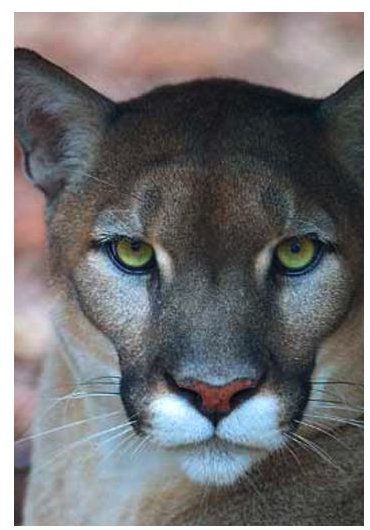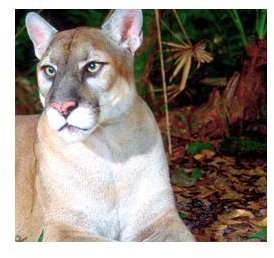How Did the Florida Panther Become Endangered? Learn the Threats to the Florida Panther & What You Can do to Help
The Florida Panther Needs our Help
The Florida Panther is considered one of the most endangered mammals on the earth as there are less than an estimated 100 panthers left in the wild. The panther had once occupied a territory that expanded across seven states but they currently only have habitat left in a small area of Southern Florida.
Due to human encroachment, habitat loss and many fatalities on roads, the Florida panther has become endangered. This threat to the entire Florida Panther species is severe. They have been on the Endangered Species list since 1967, meanwhile their population has continued to dwindle. There are efforts being made to save the panther from being wiped out completely, but the public’s voice on issues such as this are greatly needed and can make a huge difference towards creating a thriving Florida Panther population!
Fascinating Facts about the Florida Panther
- Scientific name: Puma concolor coryi
- Average size: female- 80 lbs, 5-7 feet (includes tail); male- 130 lbs. 6-8 feet (includes tail)
- Their color is tawny and brown with cream colored undersides; babies have black specks on them for the first two months of life to better conceal them from predators (they may retain some black spotting throughout life).
- Life span: 8-15 in the wild; 10-20 in captivity
- Territory: Although they once occupied parts of Georgia, Alambama, Arkansas, South Carolina, Tennessee and Texas, the Florida Panther’s only remaining habitat is in the Southern part of Florida.
- They usually hunt at dawn and at dusk.
- Their diet consits mainly of white-tail deer, but they also eat feral hogs, small alligators, armadillos and birds.
- Mating & Reproducton: Mating season lasts all year for them but is at its peak in the winter and spring. Gestation is about 90 days and there are usually 1-4 kittens.
- They require a territory that covers at least 200 square miles and travel up to 15-20 miles a day.
- The can run 35 miles an hour, but went they are hunting they usually stalk and creep up on their prey.
- There has never been a recorded human death due to a panther attack.
- The Florida Panther is an umbrella species meaning that its survival will serve to protect many other species of wildlife and native plants.
What is being done to rescue the Florida Panther?

There are several organizations dedicated to spreading awareness about the Florida Panther and there are also programs that are working to preserve land and scientists working on cross-breeding the panthers with a Texas cougar- the closest subspecies to the panther. The cross-breeding experiments have shown some positive results with the birth of a few litters, but how successful the program will be is still unnkown.
The Florida Panther National Refuge is taking aggressive measures to stop the decline of the panther. Along with the 26,400 acres of land that they have secured for panther habitat, they are also working to rid the area of non-native plants, and thus improving the natural eco-system that supports the Florida Panther and all its surrounding wildlife.
In addition, the Florida Fish and Wildfish Commisson has been monitoring the activities of the Florida Panther using radio collars on panthers since 1989. The study has provided valuable information about their preferred habitat, roaming practies, birth rate and death rate- and the causes of death.
What can YOU do save the Florida Panther?
The Florida Fish and Wildlife Commission urges the public to spread awareness about this rapidly declining and elusive feline. Wildlife conservation goes hand in hand with the mission to save our planet from global warming. The destruction that humankind has imposed upon so many wild animals and plants has brought us all to the brink of extinction with a small opportunity to turn the tables. It is our duty to rise up to this challenge, not only because we created the problem, but because our very existence is undeniabley linked with all life on this planet.
Some of the ways that you can help in the cause to save the Florida Panther from extinction include:

-
Volunteer at state parks, regional parks, nature and wildlife preserves.
-
If you live in Florida, educate yourself about the Florida Panther and inform others about what you’ve learned. The goal is to spread the message like an unstoppable virus.
-
Support all efforts and legislation that aims to protect wildlfe.
-
Monetary contributions are always welcomed by the organizations that work to save the Florida Panther (see the resource section below and visit the different websites to find out who you might like to donate to).
-
Write to political leaders today to express your concern for the Florida Panther’s plight. Big Cat Rescue has made it very easy for you to find out the right person to write to and to find out about current legislation. You can perform a search and write to elected officials in your state.
-
Adopt a Florida Panther- you’ll get a free stuffed panther to give to and help inspire a young conservationist!
-
If you live in Florida then purchase a license plate for your car that reads “Protect the Panther” (see sample on the right) to show your support- your donation will go directly towards rescuing the panthers.

Credits
Resouces & Images
